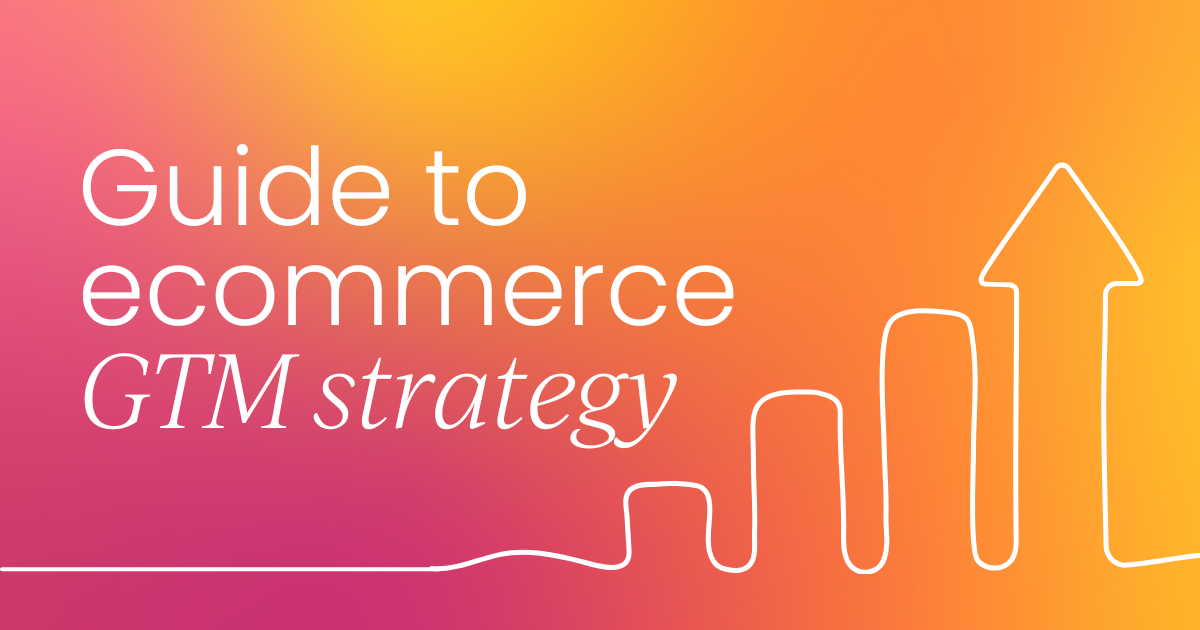This article is based on an insightful conversation with Talya Heller. Want to listen to the full episode? Tune in here.
As a product marketer with over seven years of experience across various company sizes and industries, I've seen firsthand the critical role that competitive positioning plays in go-to-market success.
Yet, many companies struggle to prioritize this effective framework when trying to really stand out in their unique markets.
In this article, we'll explore the key challenges in competitive positioning and how to overcome them, drawing from my journey from product management to go-to-market strategy.
Before we dive in, let me first share a bit about my experience and background, and why I saw competitive positioning as the common thread in how I approach strategies.
- The journey from product marketing to go-to-market
- Why competitive positioning matters
- The foundations of effective competitive positioning
- Staying ahead: how to do it
- Balancing reactivity and strategy
- Final thoughts
The journey from product marketing to go-to-market
My path to specializing in competitive positioning wasn't a straight line.
I started in project management, moved into product roles, and then found my way to product marketing. Each step was incredibly cross-functional, which turned out to be crucial for what came next.
As I progressed in my career, I began to see a clear connection between my varied experiences and go-to-market (GTM) strategy. When you're working on strategy, you're constantly thinking about what works well in different contexts. You start to pay attention, reverse engineer, and make assumptions based on these observations.
But it was competitive positioning that really caught my attention.

I noticed a significant gap in how companies approach it. Many don't take full advantage of it or don't do it right. Competition and market analysis are part of any positioning framework – it's not rocket science. But I feel like this is the phase that most people or companies tend to skip or not pay enough attention to.
From my experience, competitive positioning can truly unlock a lot of different questions down the line. It's about understanding your place in the market, not just in terms of features, but in terms of solving customer problems. Many companies don't fully see the potential or take advantage of the actual process of competitive positioning.
That's why I decided to focus here.
And if working across different company sizes and industries has taught me anything it’s that everything is transferable. So, really, it felt like a natural transition, bringing together my cross-functional experience, my interest in strategy, and my passion for solving complex problems.

Why competitive positioning matters
You might be wondering, "Why focus so much on competitive positioning?"
Well, here's the thing: whether we like it or not, every human being constantly compares things in their head. Your potential customers aren't just learning about your product in a vacuum – they're mentally mapping it against alternatives they already know.
Competitive positioning is about acknowledging this reality and helping your Ideal Customer Profile (ICP) understand where you fit in their mental map.
If we ignore this and just say we're "best in class" or "leading" without explaining how we fit into the rest of their world, we're doing ourselves a disservice. We're not really helping them understand where to place us.
The foundations of effective competitive positioning
So, how do we approach competitive positioning effectively? Let me break it down for you:
1. Know your ICP inside and out
Understanding your ideal target audience should be the foundation for everything you do in competitive positioning.
And I'm not just talking about knowing their industry or company size. You need to dig deeper. What are their pain points? What triggers them to take action? What language do they use?
Unfortunately, I've seen many companies treat ICP definition as a one-time exercise, then put it on autopilot. Don't fall into this trap. Your ICP should be a living, breathing entity. Regularly revisit and refine it through win-loss analyses and ongoing customer interactions.
2. Elevate your competitive research and map out alternatives
It's time to stop thinking about competitive research from a purely tactical perspective.
When I approach competitive positioning, I start by mapping alternatives.
This includes direct competitors but also different approaches to solving the same problem. Then, I look beyond features to reverse-engineer go-to-market strategies. I analyze the language competitors use, their described use cases, marketing channels, and collaborations.

3. Identify your true competitors
Here's something that might surprise you: your perceived top competitors might actually be targeting a different audience.
I've seen this happen many times.
A company starts with a list of competitors, putting their "nemesis" on top. But when we dig deeper, we often find that their top competitors have a completely different ICP.
Instead, focus on competitors who target the same ICP as you. This is crucial when you're explaining to your ICP what you're doing and how you're different.
4. Map your distinct capabilities
Create a matrix of your company's distinct capabilities (not just product features) and how they compare to each alternative. For each competitor, identify the capabilities that set you apart. This becomes your path to win against each alternative.

Remember, your differentiators don't always have to be product-related. We're seeing more examples today of companies standing out through their community, their brand loyalty, or other non-product factors.
5. Translate to customer benefits
Once you've identified your unique capabilities, translate these into pains you solve and benefits you provide for your ICP.
Being exceptional at something your ICP doesn't care about is meaningless.
You need to articulate why your strengths matter to them.
6. Align with your company vision
Every company should have a clear reason for existing.
Being able to articulate this story internally is crucial before we can effectively communicate it externally. If we can't explain our purpose to ourselves, how can we expect to convey it convincingly to the market?

Staying ahead: how to do it
Now, you might be thinking, "Talya, this all sounds great, but how do I keep up with the rapid pace of change in the market?" It's a valid concern!
But here's how I approach it:
1. Regular reviews: Don't treat competitive positioning as a one-and-done exercise. At a minimum, revisit your strategy when
- you're launching something new,
- your product's capabilities change significantly,
- you notice shifts in competitors' strategies,
- or your ICP evolves.
2. Monitor subtle signals: Look beyond product releases. Pay attention to changes in competitors' landing pages, shifts in their blog content topics, or new messaging in their marketing materials. These can indicate upcoming strategic shifts before product changes occur.
3. Leverage cross-functional insights: You don't have to do all the research alone. Engage with your sales teams, product managers, and sales engineers. They often have real-time insights about competitors and market trends.
4. Stay close to customers: To do this, talk regularly with your sales team, listen to sales call recordings, engage directly with customers when possible, participate in customer advisory boards, and attend industry events.
5. Make things fun and collaborative: Engage your wider team in competitive intelligence! At one company, we hosted a "competition about competition" quiz for our sales team. It was a fun way to refresh their competitive knowledge and keep everyone engaged.

Balancing reactivity and strategy
One of the biggest challenges in competitive positioning is finding the right balance between staying informed and not overreacting to every piece of competitive news.
For example, almost every company has that infamous competition Slack channel where people post updates about rivals. While these can be great for keeping everyone involved, they can also lead to emotional reactions and unnecessary panic.
If you're constantly consuming information about competitors and thinking about how to respond, you'll end up in a reactive cycle that burns everyone out. Your positioning should be strong enough to withstand minor shifts in the competitive landscape.
The key is finding that fine balance between staying aware of what's happening in the market and not overreacting to every competitive move. Stay informed, but don't let every competitor's action dictate your strategy.
Final thoughts
As we’ve seen, competitive positioning is both an art and a science.
It requires a deep understanding of your product, your market, and most importantly, your customers. By focusing on these foundational elements we've discussed, you create a solid base for effective competitive positioning.
Remember, specificity is your best friend in product marketing. Be clear about who you're targeting, what problems you're solving, and how you're different from alternatives. Seek regular feedback, maintain a growth mindset, and don't be afraid to update your strategy as the market evolves.
Most importantly, don't try to do this alone. Competitive positioning is inherently cross-functional. Engage with your colleagues across sales, product, customer success, and beyond. Their insights are invaluable in crafting a positioning strategy that truly resonates with your target audience.
By taking this approach, you'll be well-equipped to navigate the complex competitive landscape with confidence, always keeping your target audience at the center of your strategy.
Want more about competitive positioning? Check out our in-depth guide that explores what this concept is, its importance, how you can create the best competitive positioning strategy, and more (including real-world examples).







